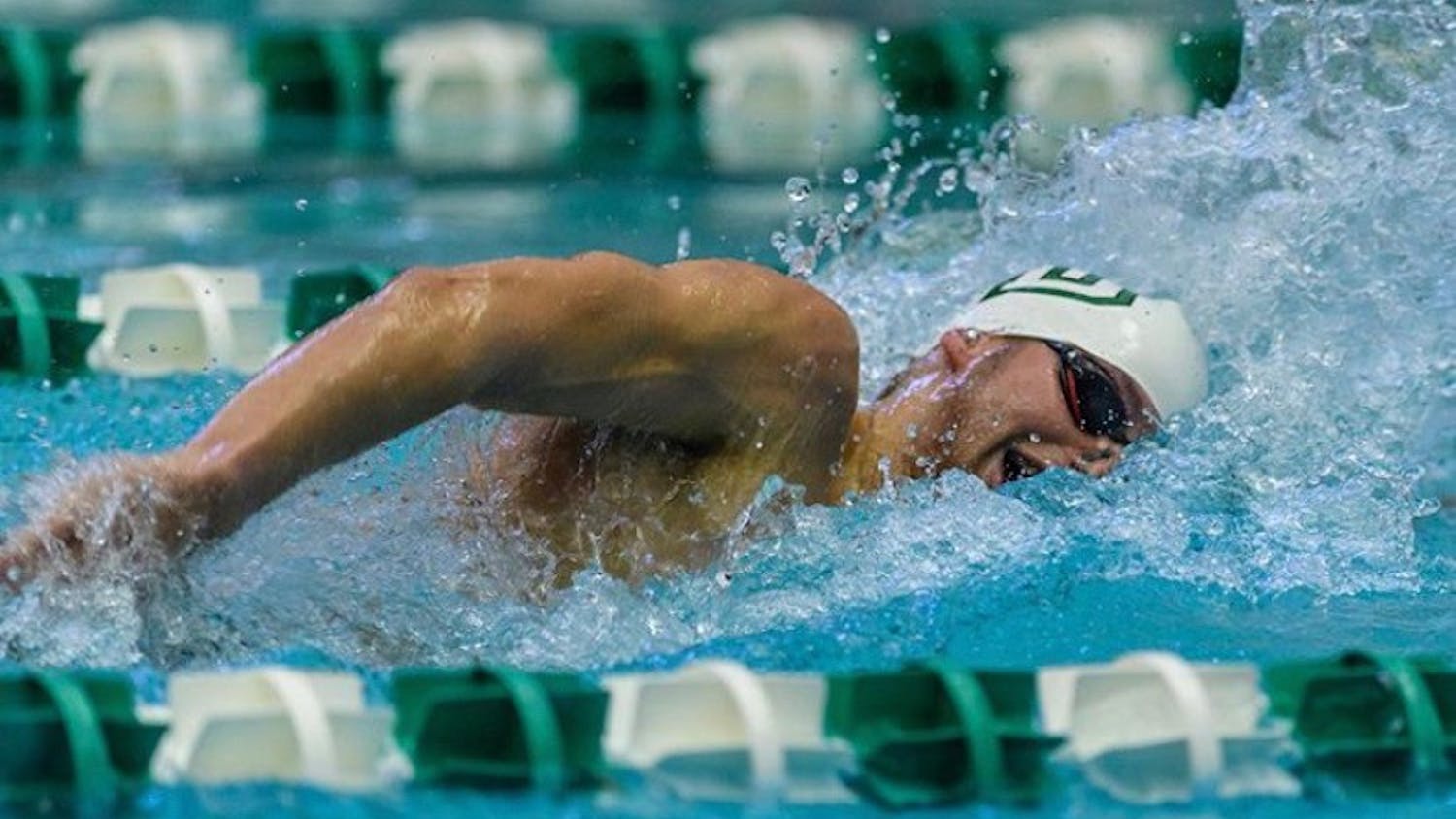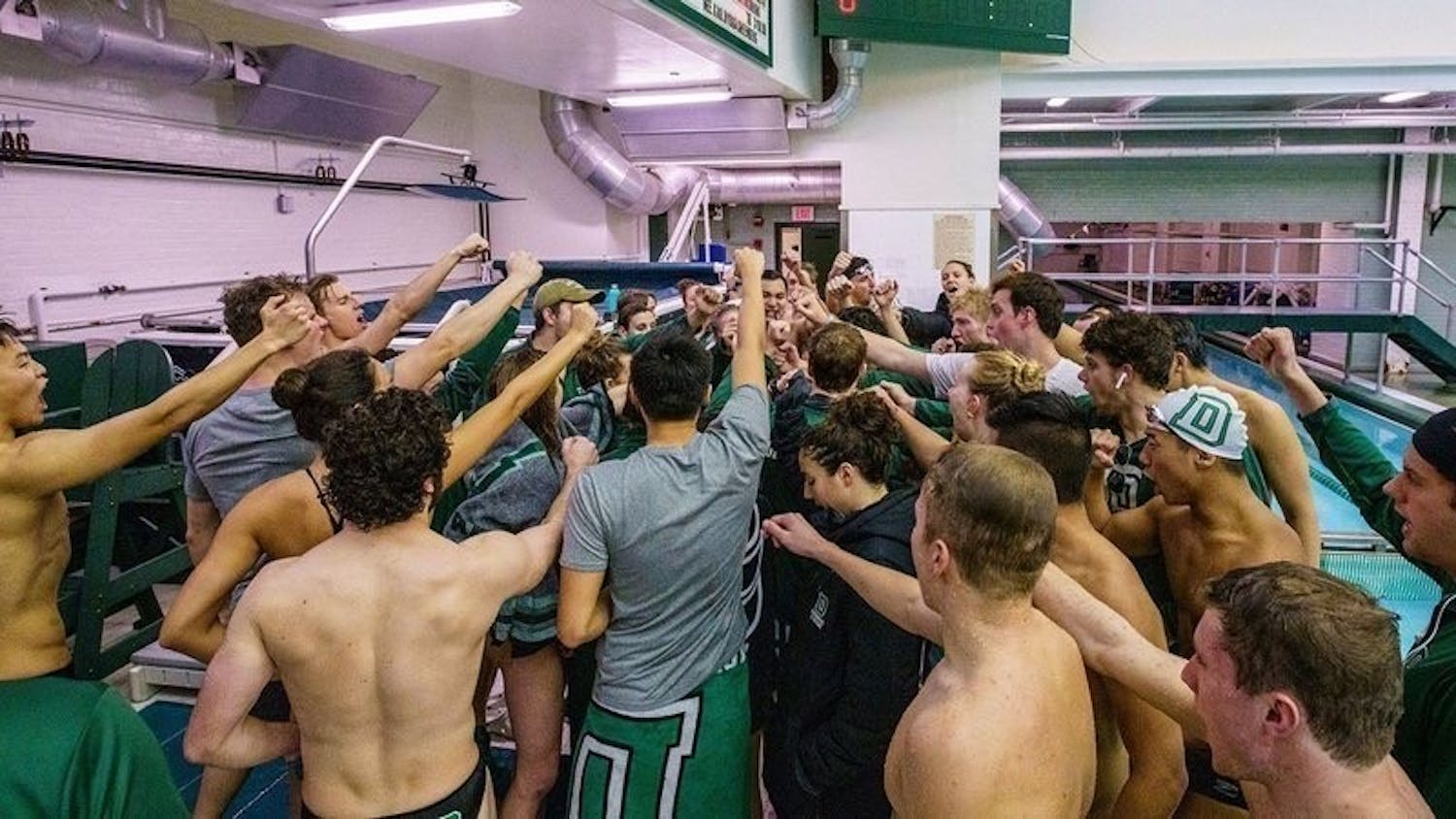Last Friday, College President Phil Hanlon unexpectedly announced that the five varsity athletic teams cut last summer — men's and women's swimming and diving, men's and women's golf and men's lightweight rowing — had been reinstated. In his email, Hanlon attributed the change to the discovery that “elements of the data that athletics used to confirm continued Title IX compliance may not have been complete.”
The vaguely worded announcement made no mention of what prompted it: a litigation threat. The women’s swimming and diving teams and the women’s golf team had recently hired a lawyer, Arthur Bryant of Bailey and Glasser, to accuse the College of violating Title IX. Just a day before Hanlon’s email, the College settled with the teams: Dartmouth would be required to immediately reinstate the women’s golf and women’s swimming and diving teams and conduct a major gender equity review of its athletic programs.
The cut teams, especially the swimming and diving teams, have been a frequent topic of conversation in recent months for their public attempts to gain reinstatement. The swimming and diving teams' months long campaign included extensive social media pushes, letters of support from Olympians and other Dartmouth athletes and allegations that the College discriminated against Asian athletes with the cuts. After all of that, what ultimately proved effective was the most recent effort — a threatened Title IX lawsuit.
The success of the teams in overturning the College's decision, however, was only possible given the vast amount of resources at their disposal. From receiving more than $1.6 million in pledged donations to laying hundreds of pairs of goggles on the Green, the teams have shown that they have an enormous amount of funds available to them. With the aid of wealthy parents and alumni, the teams could afford — unlike many others — to find and hire a top lawyer to threaten the College with a costly lawsuit. Those with fewer resources at their disposal, of course, have no such option available to them when negotiating with Dartmouth.
Following the decision to cut the teams last July, athletics director Harry Sheehy cited a list of reasons why the College decided to cut those five teams rather than slash athletic recruitment across the board, such as not wanting to hurt the competitiveness of the majority of sports. But those arguments seem to have been abandoned after a Title IX claim, a costly PR nightmare, was brought against the College.
It isn’t hard to see why Dartmouth caved at the threat of Title IX litigation. Despite the College’s renowned academics, its public image remains marred — often rightly so — by a number of high-profile scandals. Gender equity is a frequent area for criticism. As the last Ivy League school to admit women, hardly a year goes by without a gender-related issue at the College making the national news. The recent lawsuit against the College for allowing pervasive sexual harassment of female graduate and undergraduate students to persist in the psychological and brain sciences department was just the latest in a line of public relations disasters. The teams, with the backing of a high-profile lawyer, threatened another such scandal for the College.
Dartmouth had previously stated that no tactic nor sum of money could bring the teams back. Yet, the teams found a way. Putting aside the question of compliance with Title IX and whether or not the decision to cut or reinstate the five teams was the right one, the decision should come as a wakeup call. With enough money and resources and the specter of bad press, the teams had the power to push Dartmouth into giving them what they wanted.
The editorial board consists of opinion staff columnists, the opinion editors, the executive editors and the editor-in-chief.



